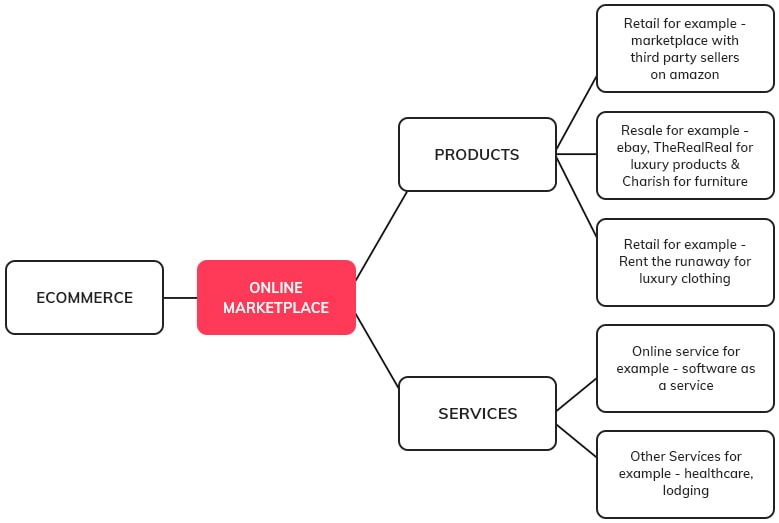In the last few years, there has been an upsurge in electronic commerce. Today’s world is moving into an era of intangible business processes where business communications and transactions take place at the click of a mouse. eCommerce have found the internet as a new medium to deploy old age EDI traditional methods of business and thus getting a new boost.
In simpler words, the term eCommerce can be delineated as buying and selling of goods & services by transmission of funds, data over an electronic medium. The inception of eCommerce was in the 1960s when businesses started using EDI (Electronic Data Interchange) to share documents with other companies.
The American National Standard Institute developed ASC X12a standard organization to maintain the EDI.
Number of users using EDI rose to huge numbers.
The rise of revolutionary eCommerce websites, eBay and Amazon.
An online marketplace is a genre of eCommerce site that connects those looking for products and services with sellers who have that particular product or service. It is an example of true green field opportunity. It creates new buying and selling opportunities. And unlike, an eCommerce site anyone can build a marketplace with minimal capital requirements since there is no inventory to build or manage.
Gartner estimates that the digital commerce platform market will grow at a Compound Annual Growth Rate (CAGR) of over 15% from 2015 through 2020, including revenue from SaaS, licenses, and maintenance.
Forrester estimates that B2B e-Commerce will top $1.1 trillion and account for 12.1% of all B2B sales in the US by 2020.
Revenues from ecommerce marketplaces are expected to double between 2017 and 2022. Juniper Research forecasts that the global marketplace platform providers’ revenues will grow from $18.7 billion in 2017 to $40.1 billion in 2022, driven by the sharing economy. The Americans are expected to contribute some 57.2% of it by 2022.

Online marketplaces are more than just selling goods. Across the globe, there is a boom in the marketplace serving specialized demands and catering to certain niches.
Clothes, decor and electrical items; these are the most common and most popular products. The number of searches, the number of search results and the number of retailers are high on these specific products. For unique or niche-specific products, you may be the first retailer. The low count of retailers in a specific niche may help to direct all the traffic to your website.
The success of niche-specific products is for a simple reason i.e. There are 10000 searches for clothing but there are at least 5000 retailers for the same, every retailer may or may not receive a customer. However in a niche based product, there are 500 searches and only a few retailers like maybe 5, this is when the cash flow starts.
Online product marketplaces involve the selling, buying and renting of products by paying money. These products can be either be delivered to the buyer or picked by the buyer from a mutually agreed location.
Retail marketplace: Brings together sellers of products on the marketplace. It functions as a virtual marketplace for third-party sellers to sell their products.
The major demand for this marketplace is the ease of purchasing, access to a large market of buyers & sellers and the ability to compare prices online. Example: Amazon, Etsy
Resale marketplace: Focused on resale and re-commerce. Resale marketplaces are gaining popularity as an increasing proportion of consumers are opting to buy old and used items. Example: Craigslist, Ebay Classified
Rental marketplace: It allows people to rent out the items they own. In this manner, they can recover the investment on these resources they expect to use only rarely. Example: Turo and Airbnb

A marketplace can be categorized in terms of participants (both in the demand and on the supply side).
C2C (customer to customer): Grass root transactions where private sellers sell their goods to peers. Presuming that there are no entrepreneurs and all participants are equal. They have similar interests, income and go to web platforms to share something. This helps to lower the administrative costs and get the best prices from the suppliers. Example: Ebay, Taobao
B2B (business to business):Businesses sell to other businesses to gain beneficial terms. Business to business online marketplace is operated by a third party. Open to buyers and sellers from a particular industry. A B2B situation occurs when procuring raw material from other businesses, needs services for operational reasons, re-sell goods produced by others. Example: Alibaba, walmart
B2C (business to consumer):It allows entrepreneurs and their customers to interact with each other. The advantage is that the customer gets everything they want and there is a wide variety of offers. Example: Amazon, Flipkart
B2B2C (Business to business to customer):Where a business rather than approaching the customers directly, assign it to another business. The end-user will recognize the business making the product or service in this model.
The table below shows a comparison between the three key business models for the marketplace. Example: Coca-Cola sells its products via an extensive distributor network to many eating joints, but Coca-Cola also markets their products directly to consumers.
| Factors | C2C | B2C | B2B |
|---|---|---|---|
| Value of sale | Tens of dollars | Tens and hundreds of dollars | Thousands and millions of dollars |
| Pricing | Negotiable market based price (market price) | Standard pricing | Customer pricing |
| Length of sales process | Hours to days | Days to weeks | Days to months |
| Number of decision makers involved | One or two | One or two | Several people to a dozen or more |
| Complexity of buying process | Simple enough; the price, delivery and payment terms are negotiable | Relatively simple; the price, delivery and payment terms are negotiable, but more rarely | Complex, long stipulations concerning the price; all the nuances are discussed even all warranty |
| Motivations for purchase | Individual needs or emotions | Individual needs or emotions | Business needs |
| Buying process for provider to use marketplace | Single step | Multiple step | More multiple step |
| Goal tasks of marketplace |
|
|
|
| Gaps | Public flea markets, private services | Retailers (goods or services) | Supply chain, wholesalers, service |
Horizontal eCommerce: An eCommerce Marketplace sells products from a large number of categories. A horizontal marketplace targets all types of sellers and buyers. This is the traditional type of eCommerce and presents itself as a one-stop-shop for all the needs of the customers. They also tend to find supply chain or scale advantages that help them offer great prices. Popular Example - Amazon.com, sells everything a consumer would ever need like books, food, furniture, toys, groceries, apparel, etc. Amazon does not have to worry about inventory management thus can increase the category as much as possible. The outlook of the website is similar to a supermarket like Walmart.
Vertical eCommerce: Vertical eCommerce are specialist ecommerce. It is very different from what traditional eCommerce understands and is also attributed as the category killer. These eCommerce websites showcase only one product segment of their platform. Since they focus on one or just a few product categories, they can engineer the experience in a way to influence the customer. Hypothetical Example - A jewelry retailer in a vertical eCommerce platform can include images of how the stone glitters in different light conditions. Also, an online pharmacy might want to add the salts and requests for prescriptions that are more apt to pharmaceuticals.

Have different ideas for your business but fail to find the right business model to translate our activities into profits? The challenging thing about monetizing a marketplace is that buyers and sellers are looking to complete transactions with one another and the commission introduces friction to the process.
In general, most marketplaces take a commission from their sellers – either through listing fees, lead generation fees, or transaction fees. The primary reason for monetizing the seller is simple: after you’ve seeded the marketplace with initial supply, demand becomes the limiting factor for marketplace growth. Charging buyers creates friction and limits their participation.
In case of the transaction fee, where the marketplace takes a definite amount of each transaction generated through the platform. It's the fairest monetization model for suppliers, as the fee is paid when they sell. This encourages more suppliers to join the marketplace and it increases the liquidity of the marketplace’s supply for two reasons:
On the other side, listing fees can have the opposite effect. Charging suppliers on your site can discourage some to list. After some time there will be no new suppliers to list on your site. In that particular light listing fee model is a little unfair as it hits all the suppliers with the listing fee-no matter how their sales end.
However, there is an upside to listing fees. They assure some level of quality control for a better end-user/buyer experience. When sellers need to pay to list, they are more likely to list items with a high chance of selling, as well as invest time developing each listing. In other words, you won’t have to worry about providers flooding your marketplace with low-quality products and poorly written listings.
Listing also can be done in the form of advertisement. The seller has to pay an amount of money to get their product listed. The fees charged can vary according to the section where the product is being listed. It is not necessary for every seller to pay this fee but those who opt for this will receive more traffic and customers.
Membership vs. Subscription model: These are the two membership plans that the admin can use for sellers. Admin can tempt the vendors into a membership plan by giving better and profitable features in the plans. In case of membership fee, which is paid once, the revenue is not dependent on the vendor's performance. The vendor understands the amount for the membership comparing it to the reputation and traffic received on the marketplace. They are always looking to sell their goods, showcase their services and stand out in the crowded eCommerce sector. Unlike the commission model, the subscription model does not get benefitted from each transaction. The subscription can be for a customer as well as vendor depending on which revenue model, the admin prefers. By this model, the vendor and customer have the leverage to choose for how long they want to avail it. One of the main advantages of the subscription model is steady monthly revenue and gives a recurring revenue and budget-friendly offers to the customers.
Private label products: The Marketplace owner can earn revenue by producing and selling their own product on the marketplace. The sheer amount of purchase data gives the marketplace owner a clear and unique advantage when it comes to starting a brand. This is an alternative source of revenue for the marketplace. The owner has to be immensely confident about the quality and customer experience their brand provides.
| Revenue stream | Definition | Advantage/disadvantage |
|---|---|---|
| Advertising and Membership fees | Fees for banner advertising and other extended listing services on another website such as “opt-in” | High requirement on customer retention and loyalty |
| Posting fee | A fee for each “posting” or order entered into the system | The dilemma of whether to permit free posting initially to encourage volume or whether to charge |
| Revenue sharing | Revenues generated through strategic partnerships with business partners who provide analytics, ratings and news service or publishing their own data and analysis | The electronic market must step up the partnership or provide analysis tools for their data. |
| Software licensing fee | Fee for licensing a sophisticated trading platform with integrated logistics and back-office functionality | The electronic market has to have a huge investment in internal system development |
The first step before building an online marketplace is to know who the prospect is. You need to know what market segments and sub-segments address. Targeting or segmenting the people will mean that you are building your marketplace for the right audience.
First figure out the need for your product and what problems it can solve. Your target market is going to be absolutely dynamic. Begin with answering these questions for finding the right mix of audiences:
Just after this let’s fill in the gap where you can make the biggest difference. You need to target your audience as much as possible to maximize your ROI.
Creating customer profiles with similar characteristics will help in fine-tuning your message from top to bottom. In the case of the B2B marketplace, the major classification of customer groups can be on the occupation, age, location, interests, and income level.

You must have heard about the chicken-egg problem...which came first? Similar is the case for marketplaces. Though the marketplace is one of the most profit-generating businesses in the contemporary eCommerce market. But building a successful marketplace isn’t that easy. Beginning with supply chain management, customer support, and product quality, marketplace reputation to bringing in sellers and the customers on the site a marketplace is a challenging business.
So, in particular, There are two approaches to bring in vendors: